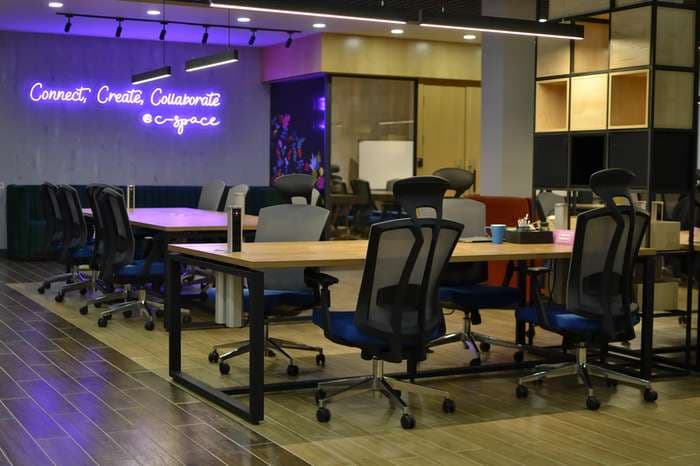Coworking vs. Traditional office”
Looking for a place for your small business? Here's how to choose between a coworking space and a traditional office.
When you choose a physical location for your business, you can choose either a coworking space or a traditional office space. Each has its pros and cons, but the right choice depends on the type of business you have, the purpose of production, and how you want your business to be perceived by customers.
If you're trying to decide between coworking and a traditional office space for your business, here's what you need to know.
Coworking spaces often have an open concept and are available to everyone who is a resident. To support a collaborative and social environment, spaces are typically filled with comfortable furniture, shared technology such as printers and Wi-Fi, and even free tea/coffee/water and snacks.
Pros of coworking:
Diverse workspace. Coworking spaces allow people to move from Open Space to Office. + Opportunities for collaboration and communication. There are many opportunities to meet people that you might not meet in normal life. + No extra costs. Expenses such as utilities, repairs and furniture, internet are all included in your fee. There are no high upfront costs or long-term commitments. You can pay monthly or choose a different plan depending on the space you choose. +You don't have to worry about office management.
Cons of coworking:
There are less expensive options. While co-working spaces tend to be more affordable than traditional offices, they still cost more than working from home or cafes. -Crowded. There are a lot of people around who can be distracting. -You share resources and rooms with other employees, so certain resources may not be available when you need them.
Traditional Offices Designed for productivity and focus, traditional offices are the private headquarters for your company. The format can be open like a co-working space, but you also have the option of dividing it into separate rooms or offices. Special meeting rooms are provided for group meetings, and you are in complete control of your technology and other resources.
Pluses of traditional offices:
+ Confidentiality. Office spaces and conference rooms offer a quiet, professional environment with fewer distractions and scheduling conflicts. +Personal branding. All office spaces carry your brand.
Cons of traditional offices:
-Less networking opportunities. There are fewer opportunities to connect with people outside of your industry. -Separation. Cubs/separate offices create barriers between employees, essentially hindering collaboration and communication between them. - Tasks of office management. Office management and management can take the focus away from projects. -Long term commitment. Traditional offices often go on long-term leases.
What is best for you?
If your business is quite small (10-12 people) or you work alone, the coworking space option is definitely for you. These spaces are a great way to save money and increase productivity. If you want to create a collaborative, creative team, a coworking space is the best choice. There are many opportunities for networking, cross-industry collaboration, and team-to-team communication. A business that has a large team of 15 or more people may consider a private office space as the most optimal solution. Traditional office spaces are less distracting, create a sense of privacy and emphasize individual productivity.
Whether you are interested in renting a coworking space or buying/renting an office, there are a few things to consider before making your decision. You need to think about how you want to present your business to potential clients, how your employees will perform best and most productively, and which option will be the most accessible.


